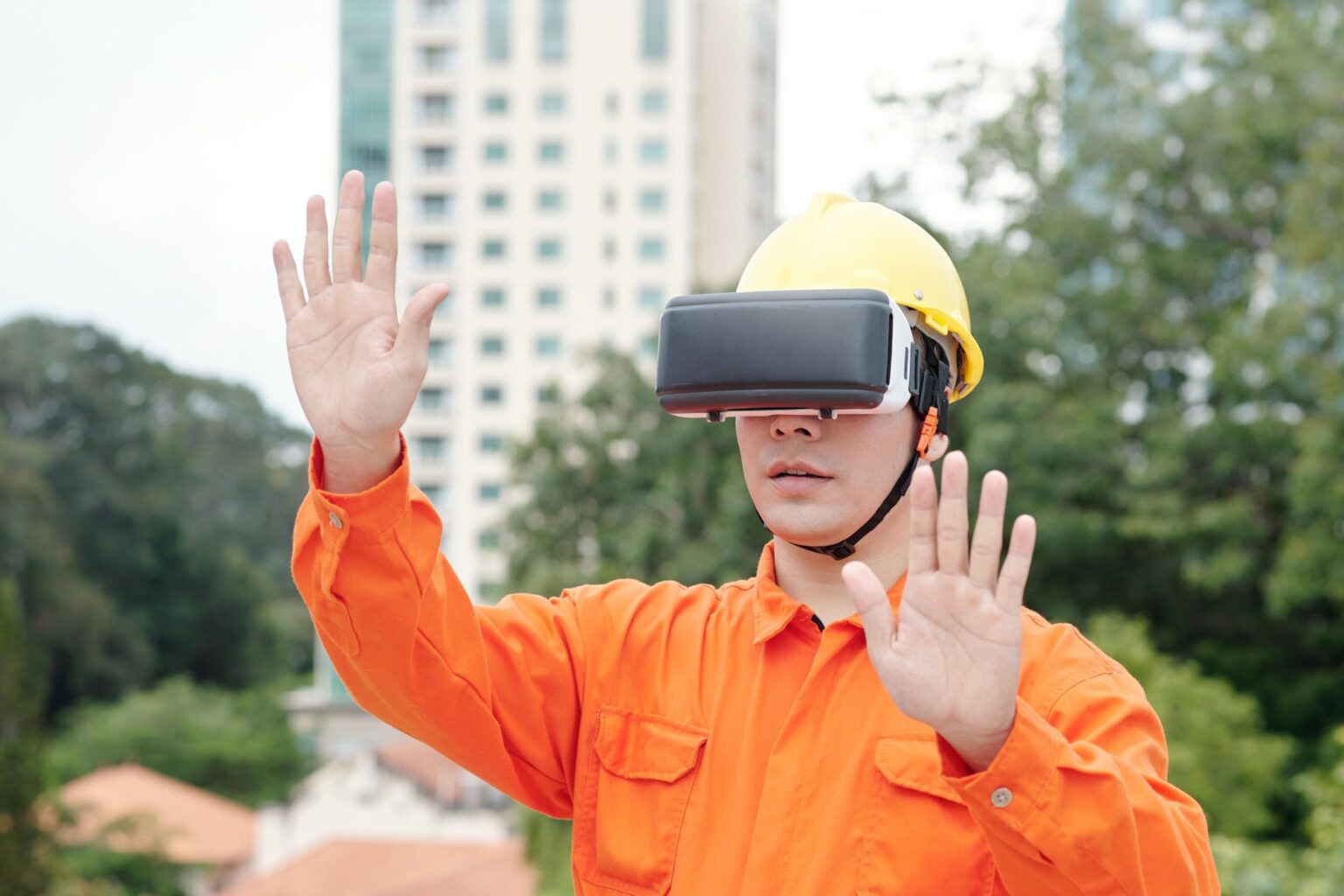Virtual Reality (VR) training is transforming the construction industry by enhancing safety and skills among construction workers. By immersing workers in realistic virtual environments, VR training provides a safe and controlled space for them to practice and develop their skills. Here’s how VR training enhances safety and skills in construction:
- Safety Training: VR allows construction workers to undergo safety training in a simulated environment without exposing them to real-world hazards. Workers can experience and practice safety protocols, such as working at heights, operating machinery, or handling hazardous materials, in a risk-free virtual setting. This helps improve safety awareness, reduces accidents, and prepares workers for potential on-site risks.
- Hazard Identification and Response: VR training can simulate various hazardous scenarios, enabling workers to identify potential hazards and respond appropriately. By immersing workers in virtual environments where they need to identify safety hazards, such as falling objects, electrical hazards, or unsafe scaffolding, VR training enhances hazard recognition skills and promotes a proactive safety mindset.
- Equipment Operation and Maintenance: VR training allows construction workers to practice operating complex equipment and machinery in a virtual environment. By simulating equipment operation, maintenance, and troubleshooting procedures, workers can develop and refine their skills without the risk of damaging equipment or causing accidents. VR training enhances equipment proficiency and reduces the learning curve during on-site operations.
- Construction Site Navigation and Familiarization: VR training can simulate construction sites, enabling workers to navigate and familiarize themselves with the layout and logistics. Workers can virtually explore the site, understand access points, identify potential hazards, and plan their movements and workflows. This virtual site familiarization enhances situational awareness and helps workers adapt quickly to new construction environments.
- Collaboration and Communication: VR training facilitates collaboration and communication among construction workers. Multiple workers can join a virtual training session simultaneously, allowing them to interact, coordinate tasks, and practice teamwork in a shared virtual environment. This enhances communication skills, promotes effective collaboration, and prepares workers for on-site coordination.
- Skills Development and Practice: VR training provides a controlled and repeatable environment for workers to practice and refine their construction skills. From carpentry and welding to plumbing and electrical work, VR simulations can recreate various construction tasks and scenarios. Workers can repeatedly practice techniques, improve their proficiency, and gain confidence before performing tasks on actual construction sites.
- Remote Training and Assessment: VR training offers the flexibility of remote training and assessment. Workers can access VR training modules from anywhere, reducing the need for physical training facilities. Trainers and supervisors can remotely assess workers’ performance, provide feedback, and track their progress. This remote training capability enhances accessibility, efficiency, and scalability of training programs.
- Cost and Time Efficiency: VR training reduces costs associated with traditional training methods, such as building mock construction sites or arranging in-person training sessions. With VR, training can be conducted using existing virtual environments, reducing material and logistical expenses. VR training also saves time by eliminating travel and setup requirements, enabling workers to train more efficiently.
In summary, VR training enhances safety and skills among construction workers by providing a realistic and controlled environment for practice and development. It improves safety awareness, hazard recognition, equipment operation, site navigation, collaboration, and skills proficiency. VR training offers remote training capabilities, cost and time efficiency, and scalable training programs, making it a valuable tool for enhancing construction worker capabilities in a safe and immersive manner.



